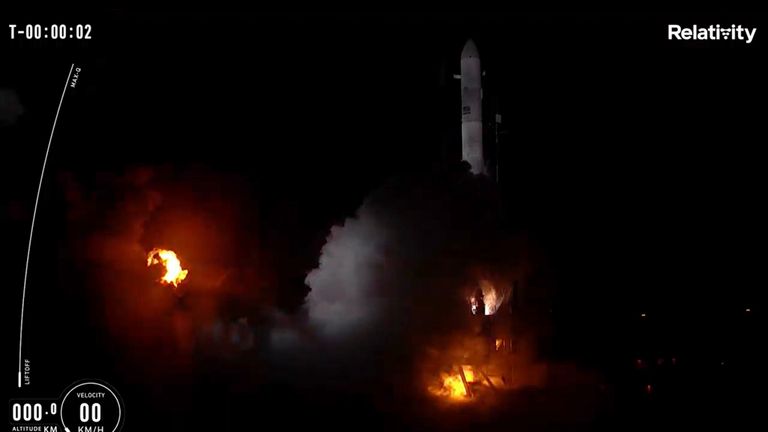The world’s first 3D printed rocket made its debut on Wednesday night, but it failed after just three minutes in flight.
Made almost entirely of 3D-printed parts, California-based aerospace startup Relativity Space’s Terran 1 booster lifted off at 11:25 p.m. local time from the Cape Canaveral Space Station in Florida.
Apart from the first metal 3D prints the company made six years ago, there was nothing in this test flight.
Which is also good, because the rocket didn’t end up in orbit, but crashed into the Atlantic Ocean.
The start-up had hoped to put the souvenir in an orbit at an altitude of 125 miles (200 kilometers) for several days, then send it through the atmosphere and burn up with the rocket’s upper stage.
While the first stage proved successful after lifting off from the Florida space station and separating as planned, the upper stage appeared to ignite and then shut down, causing it to crash back to Earth earlier than planned.
It was the third launch attempt from what was once the missile base.
read more:
Virgin Orbit plan collapses in rescue talks
Rolls-Royce secures funding for lunar nuclear reactor
Despite a failure in the upper stage that prevented the mission from reaching orbit, “first launches are always exciting and today’s flight was no exception,” said Relativity space launch commentator Arwa Tizani Kelly after Wednesday’s launch.
She added: “No one has ever tried to send a 3D printed rocket into orbit, and while we haven’t been successful today, we’ve collected enough data to show that flying a 3D printed rocket is possible.”
Most of the parts on the 110-foot (33-meter) rocket, including the engines, were produced on the company’s massive 3D printer in Long Beach, California.
The 3D-printed metal parts make up about 85 percent of the rocket, the startup said, adding that larger versions of the rocket will have more and be reusable for multiple flights.
Other spaceflight companies use 3D printed parts, but those parts usually make up only a small part of the rocket.
Relativity Space was founded in 2015 by two young aerospace engineers and has attracted the attention of investors and venture capitalists alike.
